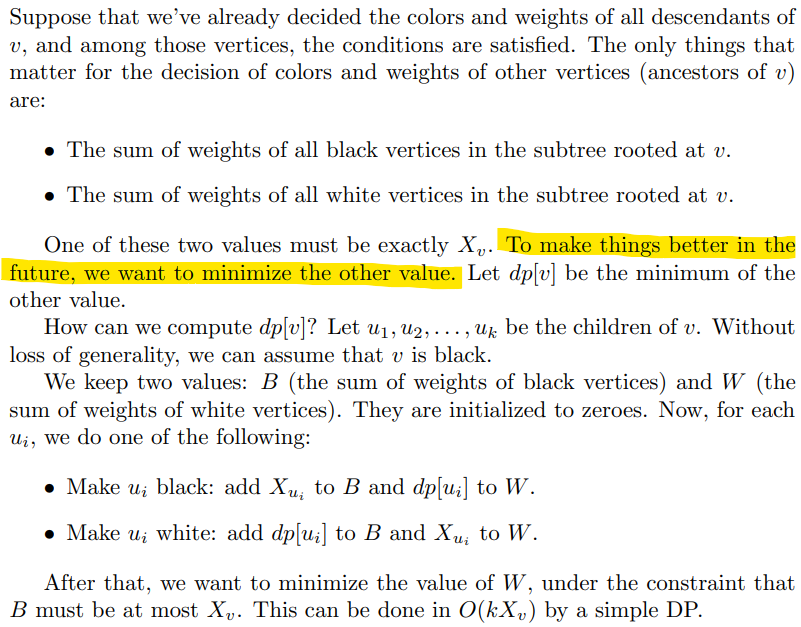A viable configuration of the given tree can be divided into two trees, each consists of vertices of the same color. Let's call them $T_B$ and $T_W$, respectively. Note that $T_B$ and $T_W$ are independent of each other with respect to satisfying the conditions. For each vertex $u$ in $T_A$, it must hold that the total weight of $u$'s proper descendants is no more than $X_u$, and in that case it is always possible make the total weight of vertices in subtree $u$ be $X_u$ by setting $u$'s weight appropriately. The same can be said for $T_B$. Ideally, we can configure the given tree such that in each subtree $u$, the total weight of vertices with a different color than $u$ are minimized.
Official editorial:

The hard part of this problem is to understand the highlighted sentence.
code
int main() {
int n;
scan(n);
vv
g(n);
rng (i, 1, n) {
int p;
scan(p);
g[p - 1].pb(i);
}
vi x(n);
scan(x);
vi dp(n);
function
dfs = [&](int u) {
vi f(x[u] + 1, INT_MAX);
f[0] = 0;
FOR (v, g[u]) {
dfs(v);
down (i, x[u], 0) {
if (f[i] != INT_MAX) {
int t = f[i];
f[i] = INT_MAX;
if (i + x[v] <= x[u]) {
chkmin(f[i + x[v]], t + dp[v]);
}
if (i + dp[v] <= x[u]) {
chkmin(f[i + dp[v]], t + x[v]);
}
}
}
dp[u] = *min_element(all(f));
if (dp[u] == INT_MAX) {
println("IMPOSSIBLE");
exit(0);
}
}
};
dfs(0);
println("POSSIBLE");
return 0;
}
I find this editorial in Chinese helpful.